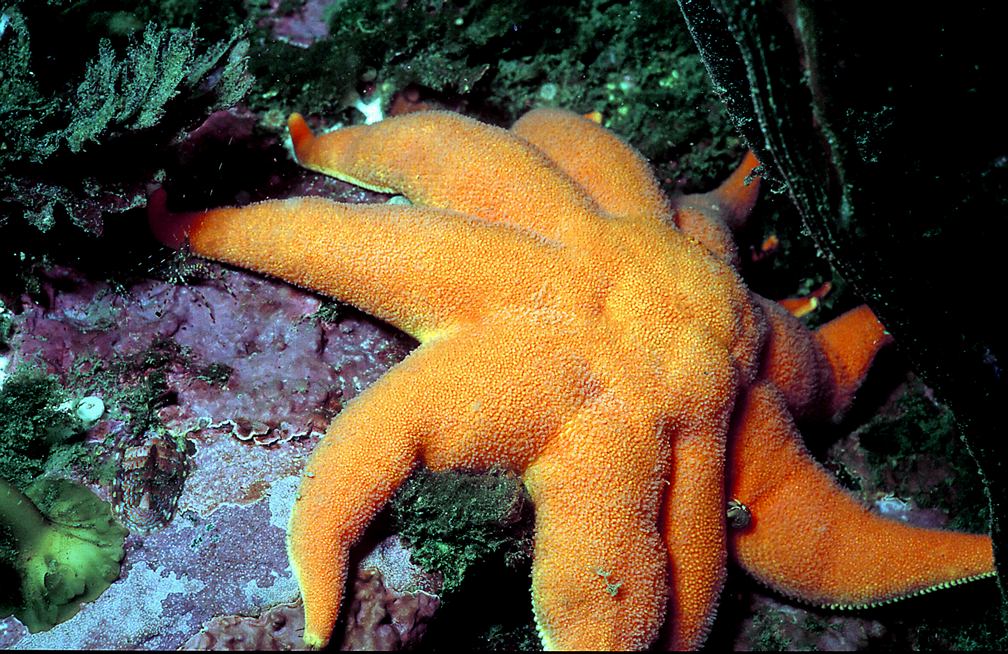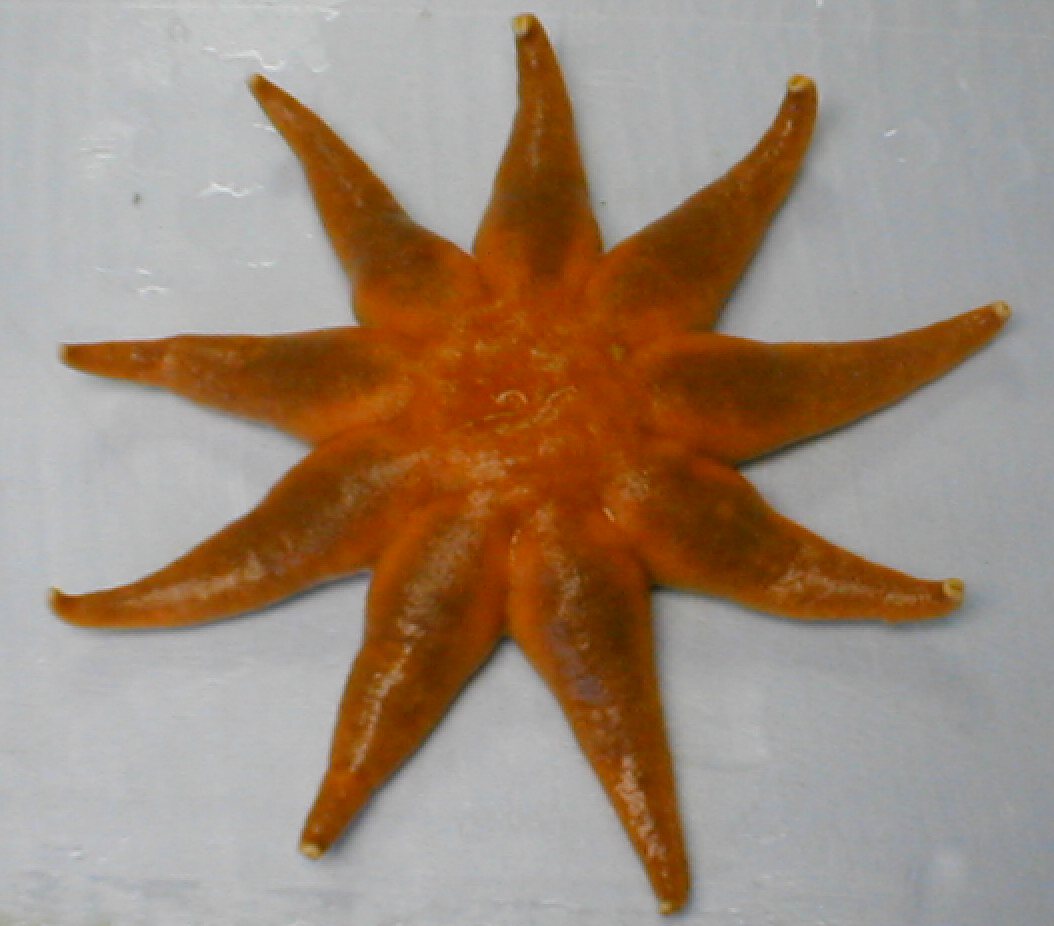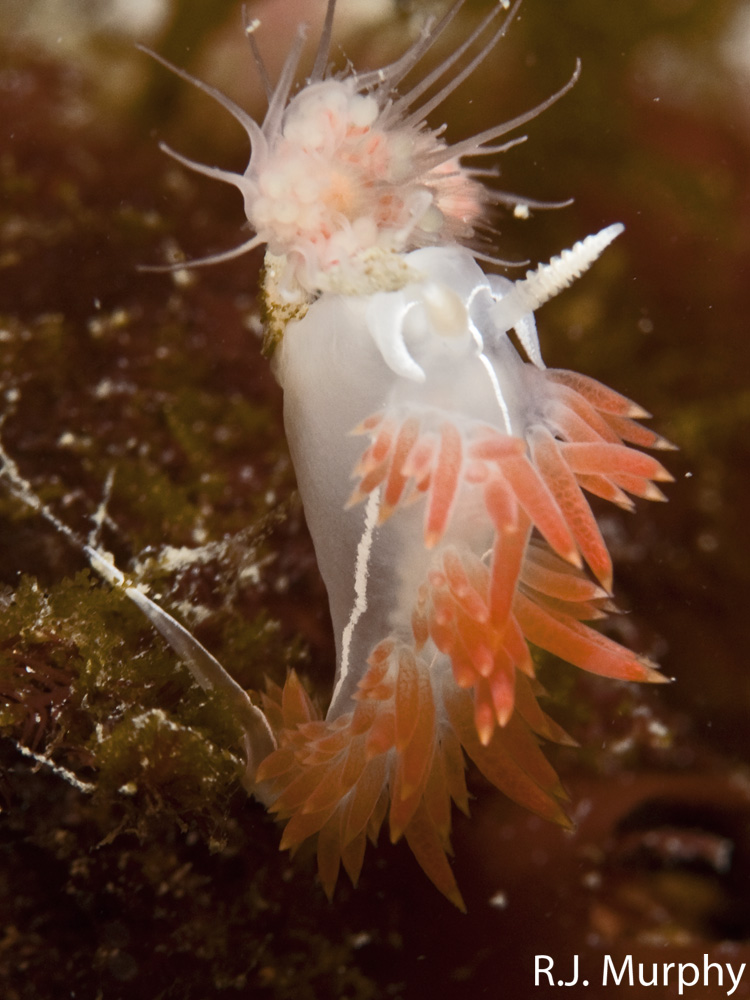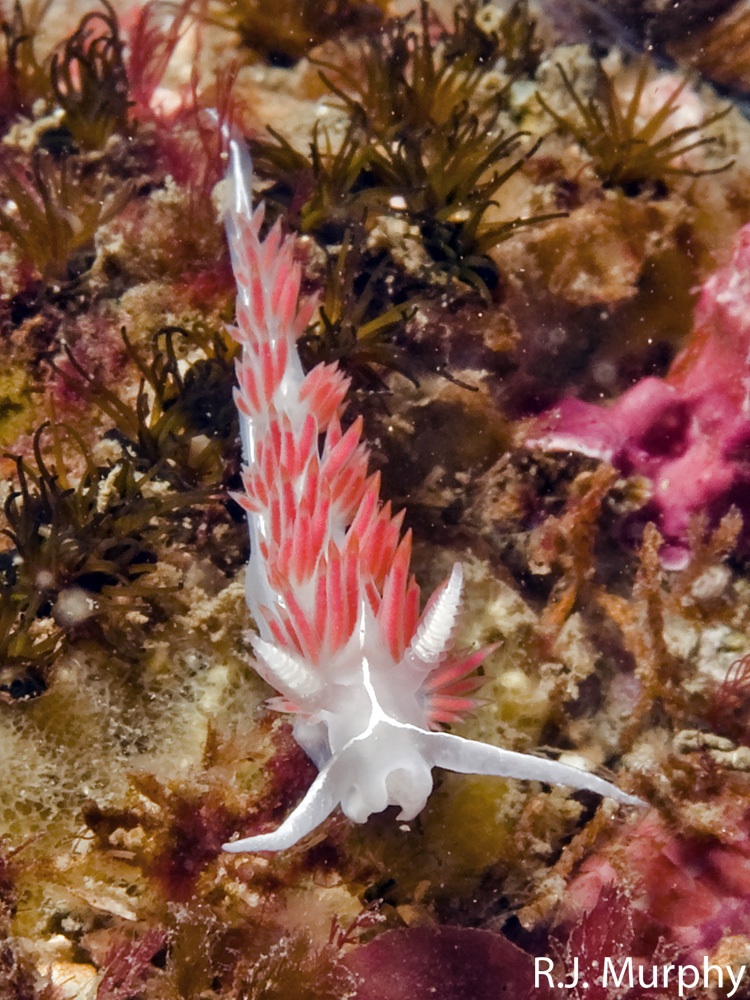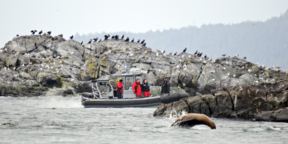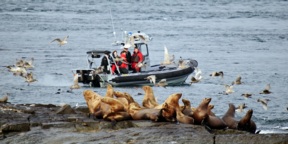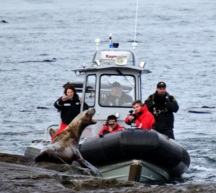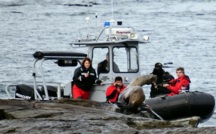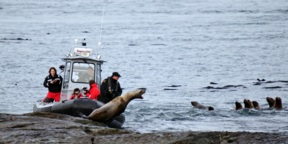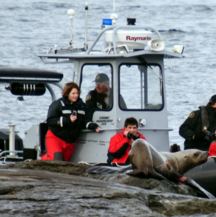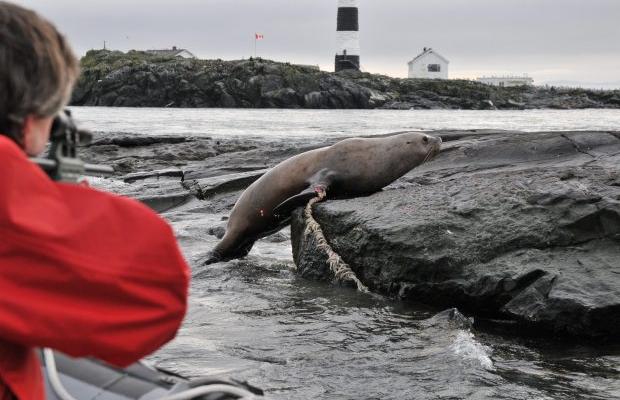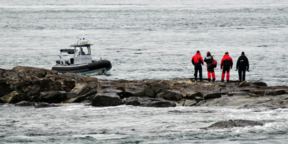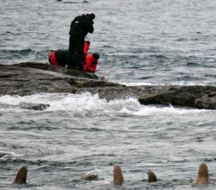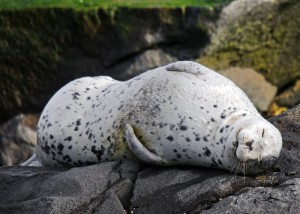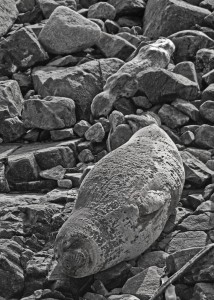‘With the N and NE wind blowing so consistently this past week, I have noticed the peregrine falcon -s) approach the island more often than usual. This week I have seen 4 fly-bys and 1 perched on top of the tower.’, ‘Ryan’, ’08:24:45 ,
Monthly Archives: December 2009
150 years of Operation of the Race Rocks Lighthouse
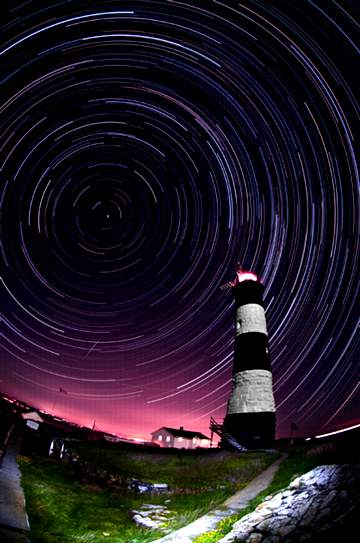 The British Colonist July 18,1859: ” The Imperial Treasury had advanced 7000 lbs to construct two lighthouses, a large one on Race Rocks : a smaller one on Fishguard (sic) Island, mouth of Esquimalt Harbor. Half the sum to be paid by British Columbia and Vancouver’s Island: the other half to be borne by the Imperial Government.”
The British Colonist July 18,1859: ” The Imperial Treasury had advanced 7000 lbs to construct two lighthouses, a large one on Race Rocks : a smaller one on Fishguard (sic) Island, mouth of Esquimalt Harbor. Half the sum to be paid by British Columbia and Vancouver’s Island: the other half to be borne by the Imperial Government.”
The British Colonist December 27, 1860: “The Race Rocks Light—The beacon on Race Rocks was lighted last evening for the first time. We had not the pleasure of seeing it shine ; but are informed that it was very brilliant, and every way suited to the duty it will henceforth perform.”
You can read other interesting articles from the Daily Colonist of the 1800’s here:
Night time exposure by Ryan Murphy. For this and other images of the lighthouse see this file;On Dec 26, 2010 we celebrate the 150th anniversary of the lighting of the lamp in the lighthouse at Race Rocks. This lighthouse, on the most southerly tip of the West Coast of Canada, is the only rock-built lighthouse in British Columbia. It has served the people of the West Coast marine community uninterrupted all this time, and still continues as an important lighthouse and foghorn station today .To mark this sesquicentennial year, Lester B. Pearson College, who manages the island and the Ecological Reserve for B.C.Parks, has set up the Race Rocks Endowment Fund dedicated to the on-going sustainable operation of Race Rocks.
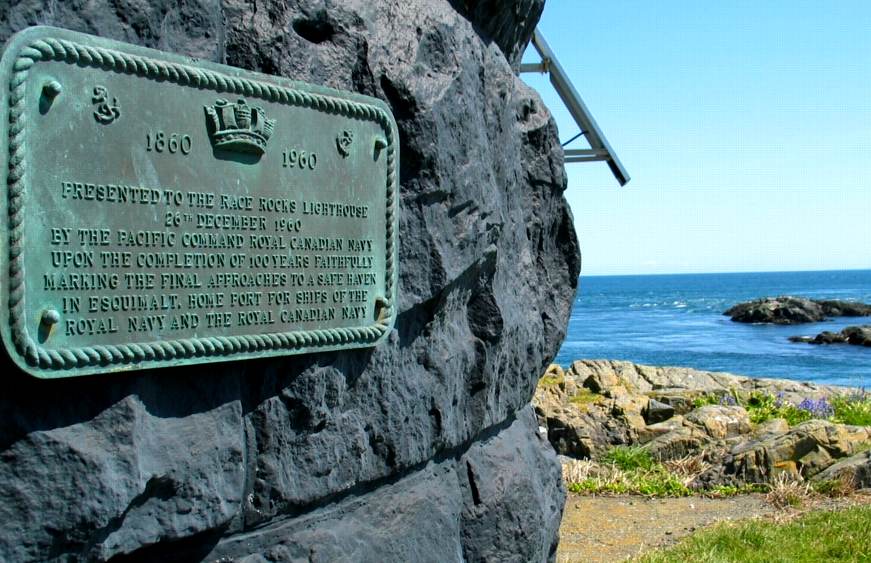 This file has many aspects of the history of the light station.
This file has many aspects of the history of the light station.
In the past year as much information as is available has been extracted on the early keepers of Race Rocks and several of the stories of heroism and tragedy are linked here.
Last year the tower underwent an extensive restoration and it now is in excellent condition.
From the top of the lighthouse, Camera1provides 360 degree coverage of the Eastern entrance to the Strait of Juan de Fuca, from this most southerly point of land on the West Coast of Canada.
Race Rocks Light tower is situated in the Race Rocks Ecological reserve, on an envelope of land on Great Race Rock leased from the Province of British Columbia. Lester B.Pearson College has since the tower and foghorn were automated by the Canadian Coast guard in 1997, provided an Ecoguardian to live on the lightstation and has a long term lease from B.C.Parks for the operation and management of the area.
See the News Page for recent articles about Race Rocks
Elephant seal numbers
-2009-12-30 ‘Elephant Seal’, 4, ‘A more or less constant number of elephant seals in the reserve this past week. Both our adult and sub-adult males -Slash and Misery) have been spending most of their time on Great Race Island. Misery has been napping near the lighthouse for most of the week while Slash has been moving around Great Race Island and going back and forth between here and Middle Rocks where two or three females are hauled out.’, ‘Ryan’, ’08:23:02
Peregrine observed
‘Two peregrine falcons were observed at the reserve today. One had taken position near on the lighthouse itself and its territorial calls first alerted me to its presence. Another bird had perched on the rocks to the SE of Great Race Island. No hunting was observed.’Ryan’, ’15:52:00 ,
‘Slash has been making short trips into the water and over to Middle Rocks but remains mostly hauled out here at Great Race Island. Two adult cow elephant seals are on Middle Rocks today, and a third female is here on the E side of the main island.’, ‘Ryan’, ’15:53:05 ,
Northern Sealions: Eumetopias jubatus, on Middle Island, Race Rocks, Dec 22, 2009
Solaster endeca: Northern Sun star
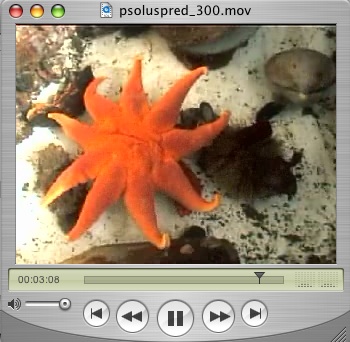 One of the frames from the video on predation on the Psolus chitinoides
One of the frames from the video on predation on the Psolus chitinoides
Predation of a Psolus chitinoides by a sea star is examined and discussed by Laura and Nadege. The stomach of the sea star surrounds the sea cucumber and the soft neck and mouth of Psolus is well inside the cavity of the sea
We see these occasionally at Race Rocks in the subtidal areas.Their favorite prey are various species of sea cucumber. Their puffy arms distinguish them from other orange stars. They can grow to 40 cm. across.
- photo by Dr. Armin Svoboda
Reference: Lamb and Hanby, Marine Life of the Pacific Northwest.
| Other Members of the Phylum Arthropoda at Race Rocks |
and Image File |
 The Race Rocks taxonomy is a collaborative venture originally started with the Biology and Environmental Systems students of Lester Pearson College UWC. It now also has contributions added by Faculty, Staff, Volunteers and Observers on the remote control webcams. The Race Rocks taxonomy is a collaborative venture originally started with the Biology and Environmental Systems students of Lester Pearson College UWC. It now also has contributions added by Faculty, Staff, Volunteers and Observers on the remote control webcams.
G.Fletcher
|
Flabellina trilineata The Race Rocks Taxonomy
Domain Eukarya
Kingdom Animalia
Phylum Mollusca
Class Gastropoda
Subclass: Opisthobranchia
Order Nudibranchia
Family Polyceratidae
Genus Flabellina
Species trilineata
Common Name: Nudibranch
 The Race Rocks taxonomy is a collaborative venture originally started with the Biology and Environmental Systems students of Lester Pearson College UWC. It now also has contributions added by Faculty, Staff, Volunteers and Observers on the remote control webcams. The Race Rocks taxonomy is a collaborative venture originally started with the Biology and Environmental Systems students of Lester Pearson College UWC. It now also has contributions added by Faculty, Staff, Volunteers and Observers on the remote control webcams.
Ryan Murphy |
Entangled Sea Lion gets rescued at Race Rocks
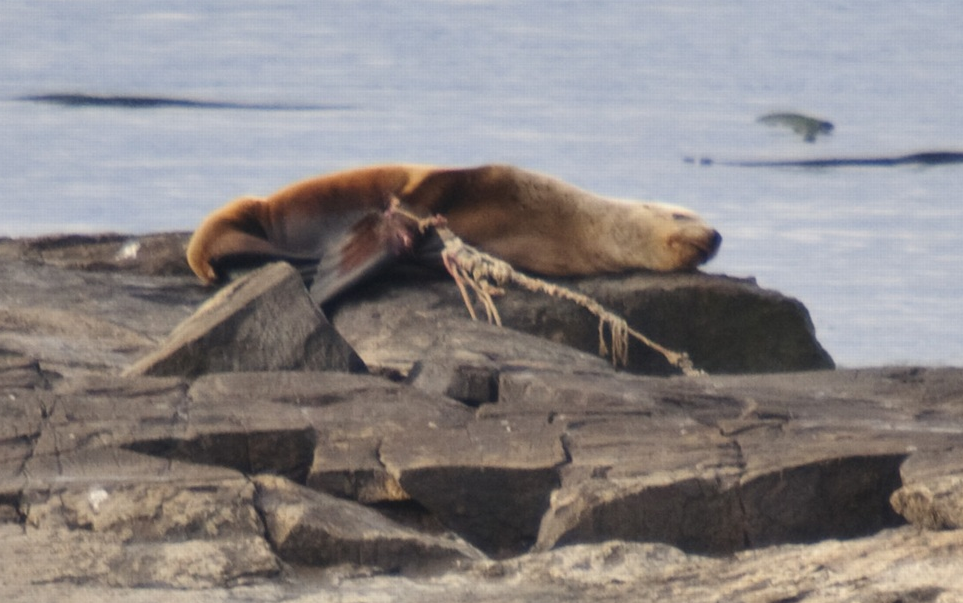
The rope had his right flipper ensnared, and it was caught on a rock leaving him tethered on the island
On December 13, 2009, Ecoguardian Ryan Murphy reported to DFO that a sea lion on Middle Island was entangled in ropes. (See Ryan’s comments below) The ropes were snagged so it could not leave the rock. A rescue was mounted by DFO and the Marine Mammal Rescue Centre of the Vancouver Aquarium on December 16. This was the first time a sea lion had been successfully released from such an entanglement.
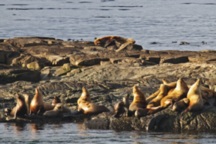 |
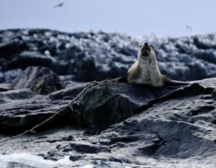 |
 |
| On December 14 he was still there | Location of the animal (top of picture) on Middle Island | A tangle of ropes had him snared so that he could go in and out of the water but not very far. |
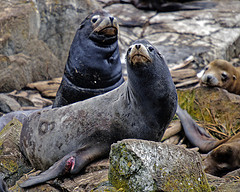 See these other images by Ryan of injured marine mammals that haul out at Race Rocks .
See these other images by Ryan of injured marine mammals that haul out at Race Rocks .
Entangled sea lion
See other images of injuries on Ryan’s Flickr site:
See this link to the log pages with injured marine mammals.
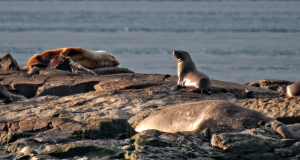 A Steller sea lion entangled in rope was spotted at Race Rocks today (12/13/09). The rope appears to be snagged in the rocks and the animal may be tethered to the island. Tomorrow DND will be blasting about 1 mile north of here, an event that usually causes all sea lions hauled out to stampede into the water. If this animal is stuck on land, an attempt may be made to disentangle it.
A Steller sea lion entangled in rope was spotted at Race Rocks today (12/13/09). The rope appears to be snagged in the rocks and the animal may be tethered to the island. Tomorrow DND will be blasting about 1 mile north of here, an event that usually causes all sea lions hauled out to stampede into the water. If this animal is stuck on land, an attempt may be made to disentangle it.
See the account of its release at https://racerocks.ca/racerock/admin/intervention/2009entangle.htm
Further comments from resident marine scientist and ecoguardian at Race Rocks Ryan Murphy
: December 21 2009
Ryan was interviewed for this article in the Goldstream Gazette: Daring Sealion Rescue at Race Rocks
“Normally, neither DFO or the Vancouver Aquarium will intervene with entangled pinnipeds (seals and sea lions), but this case was special for a number of reasons.
1. The sea lion was actually tethered to the rocks. These animals are really tough and can often survive for years with their entanglements. If tranquilized, these animals would take to the water and most likely drown before a rescue team could get to it. This wasn’t the case here and so a rescue operation was a viable option.
2. Steller sea lions (Eumetopias jubatus) like this one are listed as a species of special concern under SARA and as such are afforded a higher priority than other more abundant species like harbour seals and california sea lions.
3. This animal was most likely spotted within 24 hours of its entanglement and was still in relatively good health. Mike Demarchi of LGL who was on the island monitoring DND activity on nearby Bentinck Island and Rocky Point first spotted it on the morning of the 13th and his team and I were able to keep a very close eye on it during the daylight hours. It was reported to DFO’s Observe, Record, Report (ORR) line (1-800-465-4336) and the Vancouver Aquarium Marine Mammal Rehabilitation Centre (at 604-258-SEAL (7325) or via the emergency phone at 604-862-1647). A case like this on an offshore haul out would most likely have resulted in death by starvation, hypothermia, or drowning long before it was sighted. In the 3 days between the first sighting (first photograph) and its successful rescue, this animal had further tangled its tether from about 10m to 3m and exacerbated the wound to its flipper. The gale yesterday would have drowned it had it not been rescued.”
Pregnant harbour seal
A heavily pregnant harbour seal was seen near the jetty yesterday.
‘Slash left this morning and the female sighted yesterday has departed as well. http://farm5.static.flickr.com/4043/4178224852_9360beb97e_o.jpg)’, ‘Ryan’,


